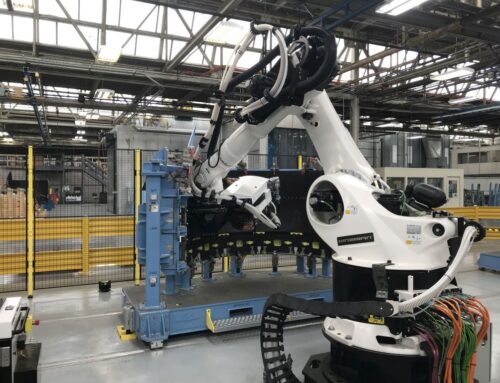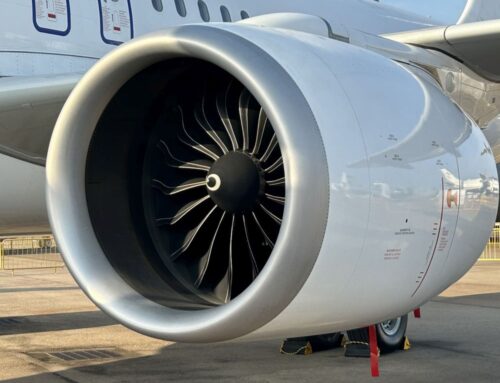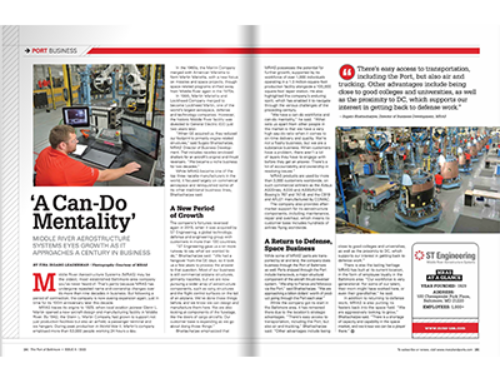COMAC’s C919 jetliner has been issued its airworthiness type certification, cl earing the way for the aircraft’s future entry in service with innovative engine nacelle systems from the Nexcelle joint venture of ST Engineering’s Middle River Aerostructure Systems and Safran Nacelles.
earing the way for the aircraft’s future entry in service with innovative engine nacelle systems from the Nexcelle joint venture of ST Engineering’s Middle River Aerostructure Systems and Safran Nacelles.
COMAC marked the C919 jetliner’s airworthiness type certification with a congratulatory banner on its website. (Source: http://english.comac.cc)
This milestone marks the second certification for an aircraft equipped with nacelles developed and produced by Nexcelle, following airworthiness approval exactly four years ago for Bombardier’s Global 7500 business jet.
The C919 features the world’s first truly integrated propulsion system (IPS) for commercial jetliners, bringing Nexcelle-supplied nacelle, thrust reverser and exhaust system together with CFM International’s LEAP-1C powerplant.
Nexcelle’s nacelle system for the C919 benefits from the proven experience of this joint venture’s MRAS and Safran Nacelles parent companies in their respective nacelle and thrust reverser product lines.
“The Nexcelle teams can be proud of the C919’s airworthiness certification milestone, culminating years of their dedication in developing a nacelle system that provides increased efficiency and sustainability, along with enhanced maintainability for airline operations,” said Sugato Bhattacharjee, the President of Nexcelle.
Bhattacharjee added that the C919’s airworthiness approval represents a true milestone for the aviation propulsion sector, building on the success of Nexcelle’s other product – the nacelle on GE Aviation’s Passport engine for the Global 7500 business jet, which was certified by the Canadian airworthiness authority, Transport Canada, in September 2018.
The C919’s airworthiness type certification by the Civil Aviation Administration of China (CAAC) was announced by COMAC, posting a congratulatory banner on the aircraft manufacturer’s website that included the following text: “At the exciting moment of celebrating C919 obtaining Type Certificate issued by CAAC, we sincerely thank global suppliers, partners, customers and all circles for their support and encouragement. We have worked together for a long time, hand in hand, to succeed in developing the C919 aircraft.”
Based on Nexcelle’s work-sharing arrangement with its two parent companies, Middle River Aerostructure Systems is responsible for supplying the nacelle’s inlet, fan cowls, inner fixed structure and engine mounts. The C919 nacelle system’s lead industrial role is assigned to Safran Nacelles, which developed and supplies the O-Duct thrust reverser. Safran Nacelles also brings its ETRAS expertise for use in the O-Duct’s deployment.
Nexcelle’s innovative O-Duct thrust reverser
At the core of Nexcelle’s innovation for the C919’s nacelle is its translating O-Duct thrust reverser. The large single-piece composite O-Duct replaces two-piece “D” doors on traditional thrust reversers, enhancing the internal airflow path and improving fuel consumption – while also increasing thrust reverser efficiency when deployed.
Deployment of the O-Duct’s is performed with an evolved electrical thrust reverser actuation system (ETRAS), replacing heavier hydraulics that typically are used in thrust reversers, while also improving maintainability.
Another Nexcelle innovation on the nacelle is the fan cowl – which is structurally integrated to the LEAP-1C engine, along with an integrated mounting system for the nacelle that reduces engine distortion and enhances on-wing performance.
The nacelle also incorporates an extensive use of lightweight and state-of-the-art noise-attenuating composite materials, and also is equipped with a low-drag front end that incorporates an air inlet with a one-piece lip skin. As the largest of its kind to enter production on a higher-thrust commercial jet engine, this air inlet improves airflow and contributes to lower noise.
Additionally, the inlet has a directed flow nozzle deicing system that more efficiently swirls engine bleed air within the inlet lip. The use of this deicing lowers the nacelle’s weight while providing increased efficiency and improved maintainability when compared to traditional nacelle deicing systems.



